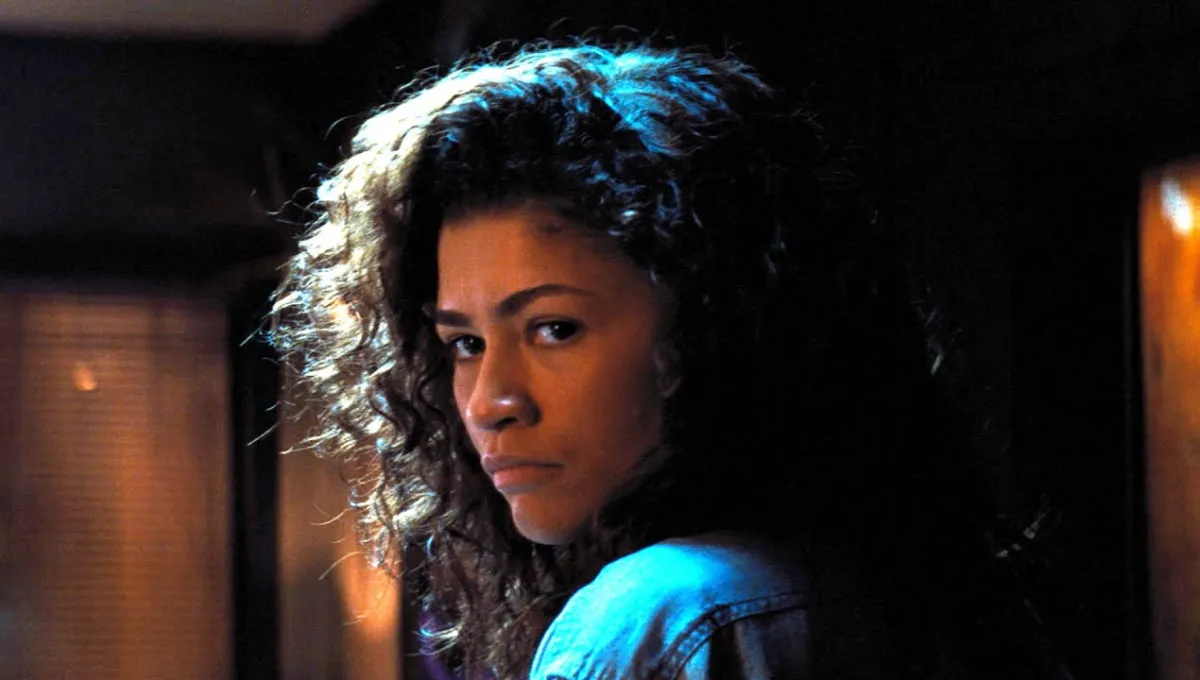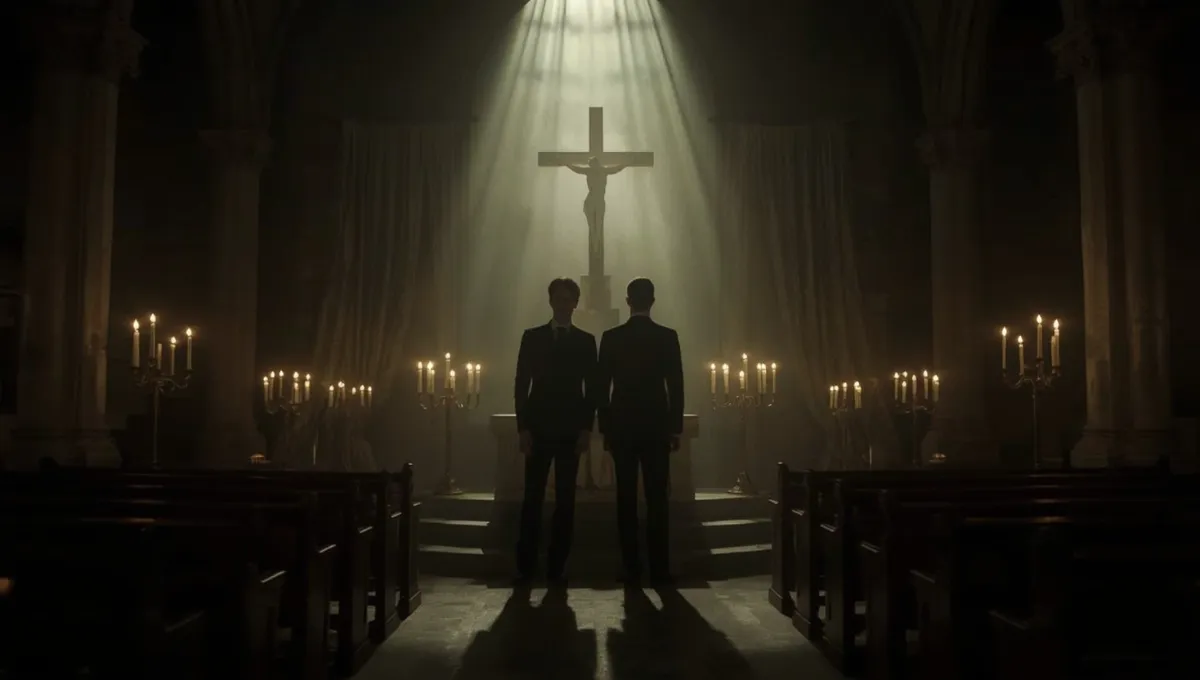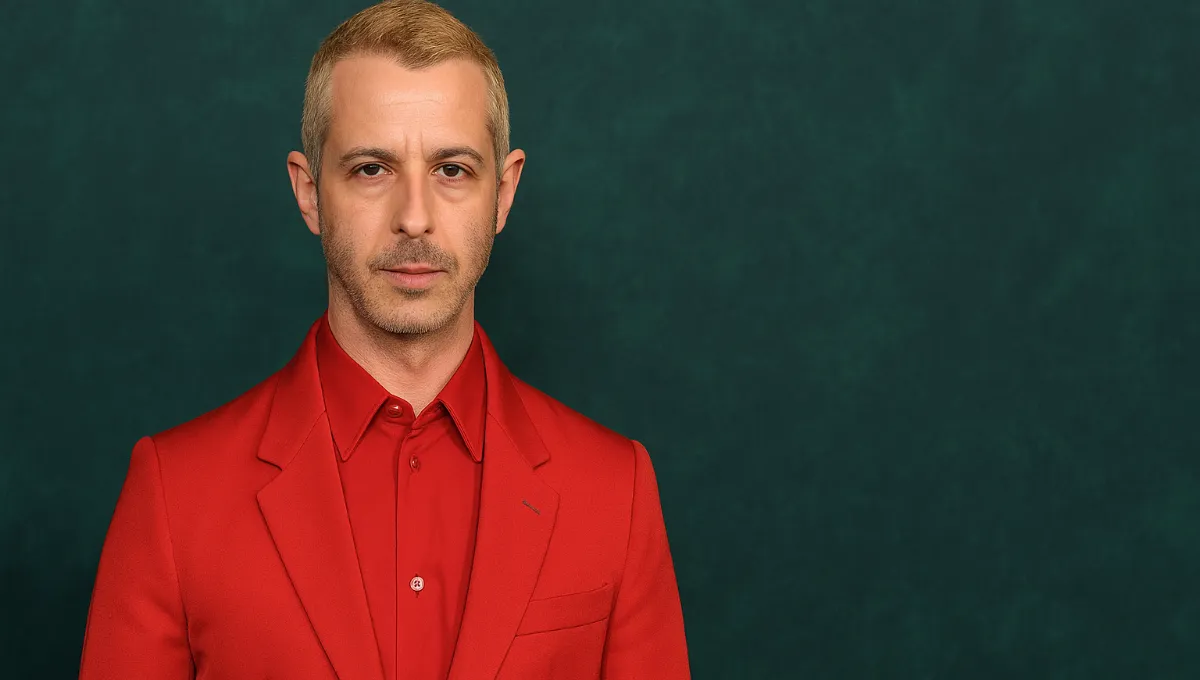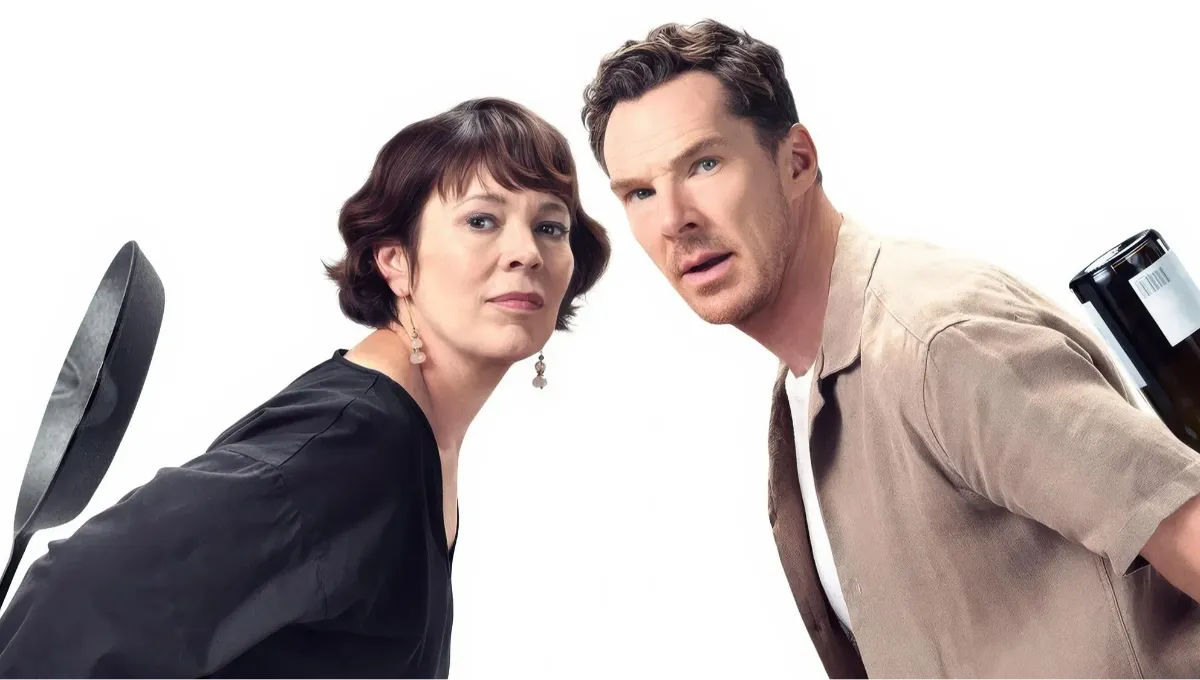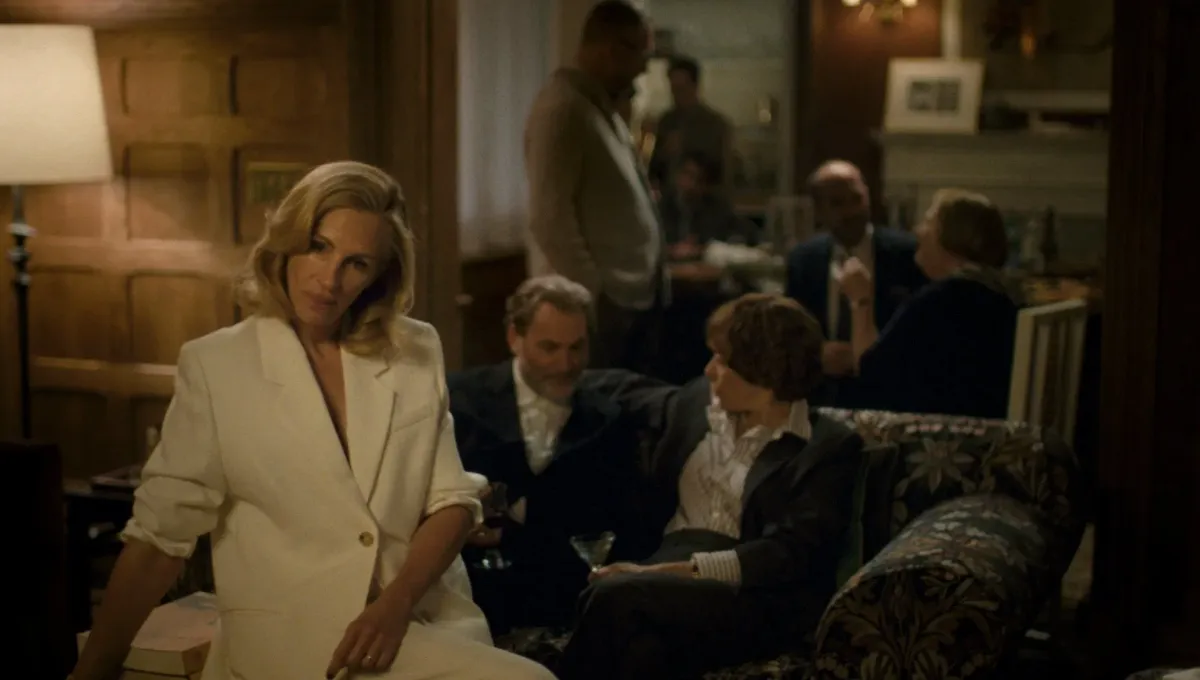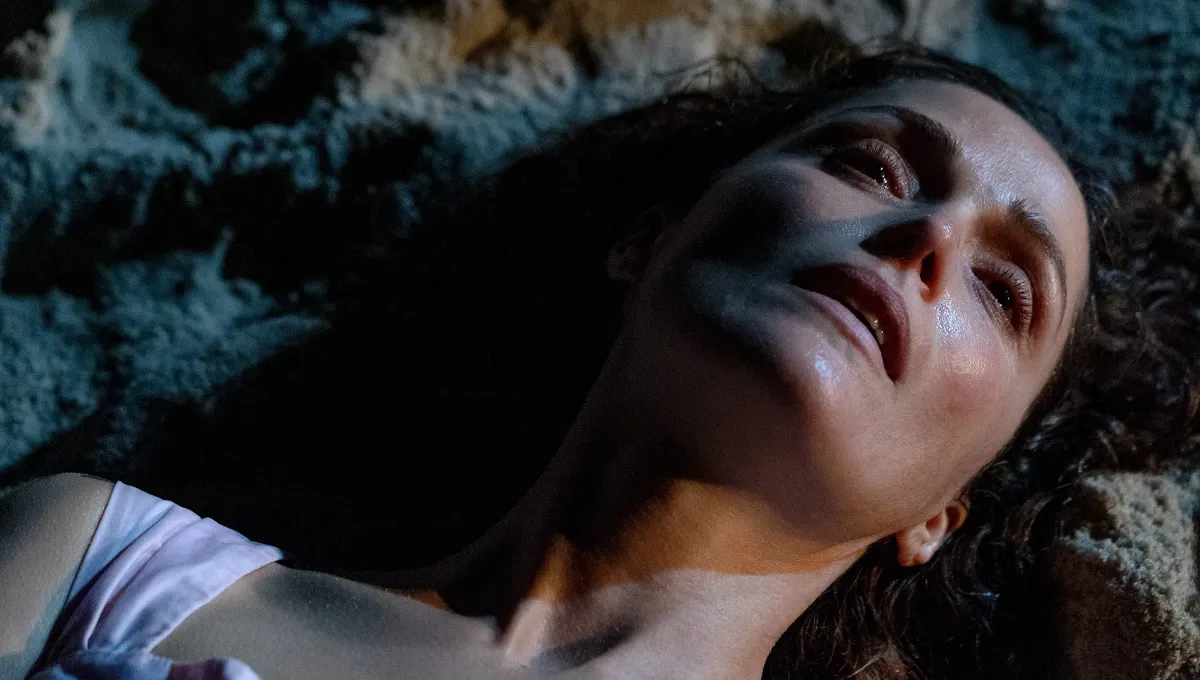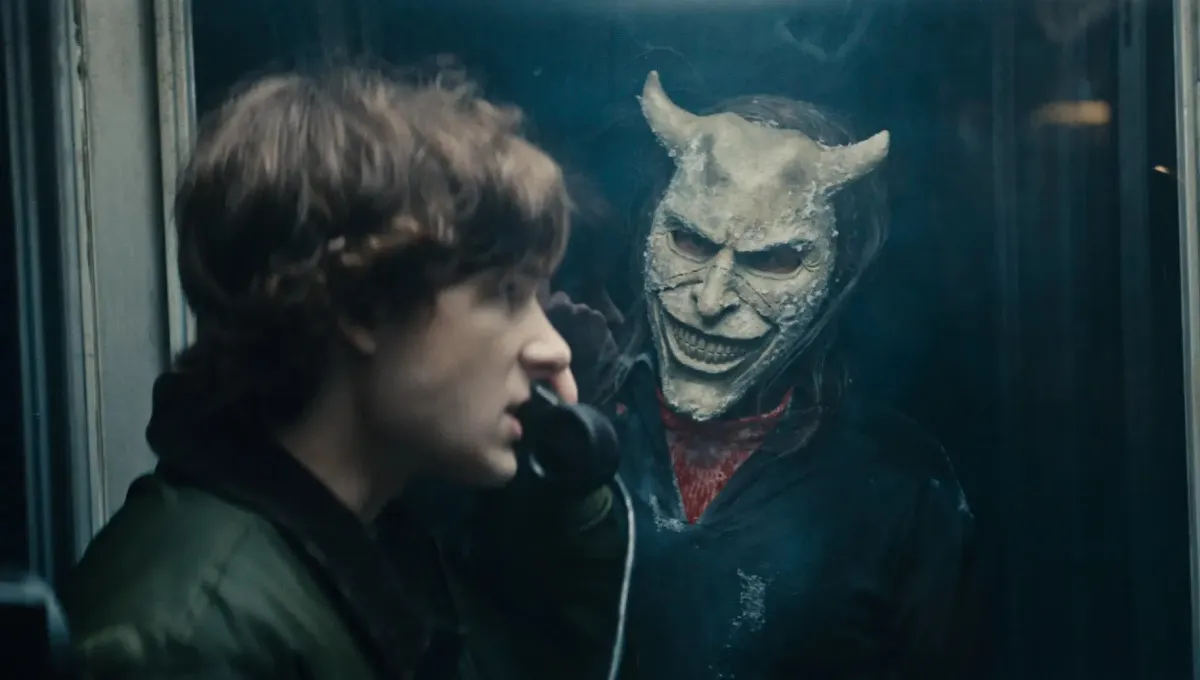When December arrives, thrillers rarely feel this cold. The Housemaid (2025) turns domestic luxury into psychological warfare, exposing the sharp edges beneath polished glass and designer calm. Directed by Paul Feig and based on Freida McFadden’s bestselling novel, the film transforms a familiar setting—a young woman taking a job in a wealthy household—into a slow-burn nightmare about control, secrets, and the cost of reinvention.
A Story That Begins with a Door Closing
Millie Calloway has nowhere left to go. She’s broke, desperate, and looking for a second chance when she accepts a position as live-in housemaid for Nina and Andrew Winchester. Their mansion is a modern fortress of marble and mirrors, with a set of unspoken rules that sound simple: keep the house immaculate, never enter certain rooms, and stay invisible. But the more Millie tries to keep her head down, the more she senses something fundamentally wrong about this picture-perfect marriage.
At first, Nina seems like the kind of elegant, tightly wound woman Millie has always envied. Her husband, Andrew, is charming but emotionally distant, a man used to being obeyed. Yet behind every calm breakfast, every manicured smile, lies a tension that hums like an alarm just below hearing range. Soon, Millie realizes she isn’t just cleaning someone else’s home—she’s walking straight into their carefully constructed lies.
What begins as gratitude turns into suspicion, and what looks like safety becomes a trap. As the story unfolds, we learn that Millie’s own past isn’t as innocent as it seems. By the time she uncovers what really lives in the locked upstairs room, the game of power between servant and mistress will have reversed in ways neither of them could have predicted.
From Bestseller to Big Screen
Freida McFadden’s novel The Housemaid became a viral sensation because it captured a chillingly relatable fantasy: being close enough to privilege to taste it, yet excluded from it completely. Paul Feig’s adaptation brings that claustrophobia to life through shifting camera perspectives, quiet rooms, and subtle gestures that turn the ordinary into something sinister. The film doesn’t rely on cheap shocks; its dread comes from watching civility collapse one polite exchange at a time.
Screenwriter Rebecca Sonnenshine keeps the focus on manipulation and female agency. The dynamic between Millie and Nina is not just servant versus employer—it’s mirror versus reflection, a psychological duel in which both women are trapped by the expectations placed upon them. Feig, best known for smart ensemble storytelling, directs with restraint, letting every glance feel like a secret waiting to be weaponized.
The Cast Behind the Masks
At the center of the film is Sydney Sweeney as Millie Calloway. Sweeney’s performance anchors the tension; she plays Millie as both survivor and observer, a woman learning how to use her own invisibility. Beneath the fragility lies calculation, and when her quiet defiance finally erupts, it’s explosive without ever losing emotional truth. Her transformation from subservient maid to strategic player is the beating heart of the movie.
Amanda Seyfried embodies Nina Winchester with chilling precision. Her Nina is not a cliché of the cold rich wife; she’s a woman curated to perfection, whose control becomes her greatest form of violence. Every smile hides an accusation, every tremor of kindness conceals threat. Seyfried builds her character from the inside out—a performance that oscillates between sympathy and sociopathy, making Nina both captivating and terrifying.
Brandon Sklenar as Andrew Winchester adds another layer of ambiguity. He’s the charismatic husband whose loyalty is impossible to read, a man who thrives in silence and lets others tear each other apart. Michele Morrone brings seductive unease to Enzo, the handsome groundskeeper whose motives blur the line between desire and deceit. Ellen Tamaki, Megan Ferguson, and Brian D. Cohen round out the supporting ensemble, each adding shades of reality to a world built on lies.
Themes: Power, Class, and the Masks We Wear
Beneath its thriller surface, The Housemaid examines the modern obsession with appearances. The Winchesters’ home becomes a metaphor for social media perfection—flawless, filtered, and ultimately hollow. The housemaid, invisible yet omnipresent, sees what others don’t: the cost of keeping up appearances, the emotional decay hidden beneath designer lighting.
Feig and Sonnenshine explore class division with the precision of a scalpel. The upstairs/downstairs tension echoes Gothic storytelling, but updated for a contemporary audience who understands how image and privilege now operate online as much as in real life. Millie doesn’t just serve breakfast—she polishes the illusion that everything is fine. Her rebellion begins the moment she stops believing in that illusion.
Another central theme is female identity and rage. Both Millie and Nina are women trapped in roles society wrote for them: one submissive, one superior. But as their positions blur, the story becomes a reflection on how women learn to survive in systems designed to control them. It’s a dance of empathy and cruelty, love and loathing, freedom and captivity.
The House as a Character
Visually, the film treats the mansion not merely as a setting but as a living organism. Every corridor reflects light differently, every closed door whispers something unspoken. Production designer Darren Gilford and cinematographer John Schwartzman reportedly created a world where symmetry itself becomes sinister. The more perfect the environment looks, the more the audience feels the imbalance beneath it. The sterile architecture mirrors the moral emptiness of the people who live there.
Sound design plays an equally crucial role. The hush of footsteps on marble, the faint hum of appliances, the slow click of a lock—these everyday noises become percussion for paranoia. Combined with Theodore Shapiro’s restrained score, they transform domestic space into psychological theater.
Tone and Style
Unlike typical thrillers that rely on fast pacing and sharp editing, The Housemaid builds tension through precision. Feig uses long takes, deliberate framing, and natural lighting to amplify discomfort. Scenes that start as harmless conversations stretch into psychological duels. The pacing mimics the experience of working in such an environment—slow, repetitive, but with an ever-present sense of danger.
The aesthetic is polished but cold. Whites dominate the palette, offset by muted shadows and reflective surfaces. The visual contrast mirrors the script’s moral duality: good intentions and hidden cruelty coexisting in the same pristine space.
Performances That Carry the Weight
Sweeney and Seyfried create a rare cinematic chemistry built on tension rather than romance. Each woman becomes the other’s shadow—one desperate to belong, the other terrified to lose control. Their performances elevate the material into something almost operatic. Morrone’s presence injects a charged physicality, and Sklenar’s restraint makes his character’s unpredictability even more menacing.
Feig allows his actors to breathe within the frame. Instead of pushing them toward melodrama, he lets stillness do the talking. The result is a film that feels unnervingly intimate, as though the audience were another unseen observer in the house.
Why It Matters
The Housemaid arrives at a time when audiences are craving psychological stories over spectacle. After years dominated by franchises and jump-scare horror, this film offers a more cerebral kind of fear—the terror of realizing that power often hides behind politeness. It questions what it means to be “good” in a world built on exploitation, and what happens when the invisible decide to fight back.
For readers of McFadden’s novel, the movie delivers the same tightrope suspense but reinterprets it for the screen. For newcomers, it’s a reminder that the scariest monsters don’t live in forests or haunted basements—they live in bright, spotless kitchens.
By the end of The Housemaid, perfection has collapsed into chaos. Every secret comes at a price, and every act of submission hides rebellion. Paul Feig proves that elegance and terror can coexist, that thrillers can whisper instead of scream, and still leave you breathless. Sydney Sweeney emerges with one of her most layered performances yet—sympathetic, dangerous, and utterly magnetic.
When the credits roll, the question lingers: who was really in control? The answer may depend on how closely you were watching.
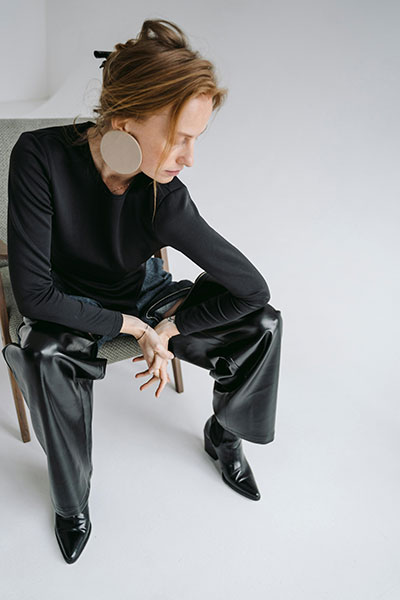
Grace Whitmore is a beauty and lifestyle editor at Nestification, exploring the intersection of modern femininity, quiet luxury, and emotional design. Her work focuses on how aesthetics, mindfulness, and self-expression shape today’s idea of calm confidence — where beauty becomes a state of mind.
Based in New York · [email protected]

